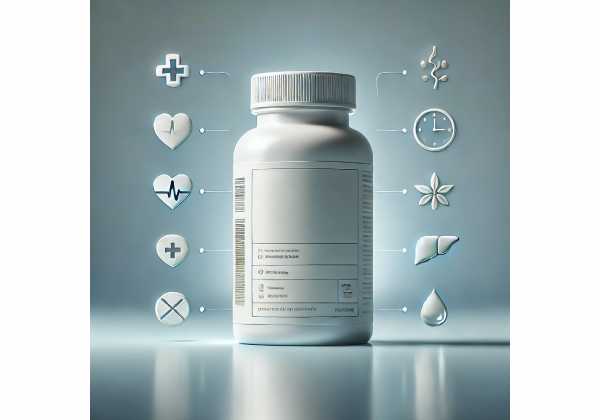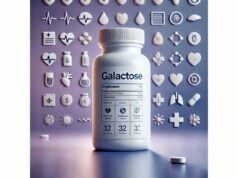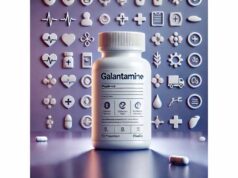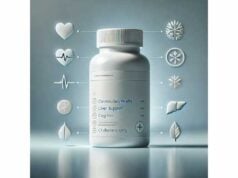
Galega officinalis—also called goat’s rue or French lilac—is a traditional European herb best known for inspiring the modern diabetes drug metformin. The plant contains guanidine derivatives such as galegine that can influence glucose handling, though clinical evidence for the whole herb remains limited. Today, people most often encounter Galega in teas, tinctures, or capsules marketed for metabolic support or as a lactation aid. This guide explains what it is (and what it is not), the potential benefits and limitations, how to use it thoughtfully, who should avoid it, and the current state of the science. You will find practical dosing ranges from historical sources, preparation tips, and safety guidance to discuss with your healthcare professional so you can decide if Galega officinalis fits your goals or if better-studied alternatives make more sense for you.
Key Insights
- May modestly support glucose management via galegine and related compounds; evidence in humans is limited and not comparable to metformin.
- Claims for increasing milk supply are not backed by high-quality trials; professional lactation support should come first.
- Traditional human dosing centers around 2–4 g of dried aerial parts per day (tea or capsules); begin low and reassess after 2–4 weeks.
- Avoid if pregnant, under 18, or using insulin or diabetes medicines without clinician oversight due to hypoglycemia risk.
Table of Contents
- What it is and does it work?
- Potential benefits, realistically
- How to use it and dosage
- Side effects and interactions
- Who should avoid it and why
- Evidence snapshot and research gaps
What it is and does it work?
Galega officinalis is a perennial legume native to parts of Europe and western Asia. In traditional medicine, the aerial parts (leaves and flowering tops) were brewed as tea or prepared as tinctures for symptoms associated with high blood sugar, diuresis, and postpartum milk supply. Chemically, Galega contains guanidine derivatives—most notably galegine—along with flavonoids and phenolic acids. These constituents attracted scientific interest in the early 20th century because guanidine compounds lower blood glucose in animals. Iterations on the guanidine scaffold ultimately produced the biguanides (phenformin, buformin, and metformin), with metformin now a global first-line medicine for type 2 diabetes. That historical connection often causes confusion: Galega officinalis is not metformin, and the herb’s benefits, potency, dosing, and safety profile are not interchangeable with the prescription drug.
“Does it work?” depends on the outcome you care about:
- Blood sugar: Modern, well-controlled human trials of Galega are scarce. Existing data come mostly from chemistry and in-vitro work, historical observations, and small, methodologically weak studies. It’s reasonable to expect, at most, a modest effect on fasting or post-meal glucose in some users, especially alongside diet and exercise. It is not a substitute for medical therapy when indicated.
- Lactation: Goat’s rue is widely used as a galactagogue, but high-quality randomized trials are lacking. Reviews of oral galactagogues find inconsistent or low-certainty evidence across herbal products; for goat’s rue specifically, the modern clinical evidence base is insufficient to establish benefit. This is why professional organizations emphasize addressing latch, frequency, and maternal health before (or instead of) herbal add-ons.
- Antioxidant and glycation pathways: Laboratory studies report antioxidant activity and trapping of the reactive carbonyl methylglyoxal (a glycation intermediate). While mechanistically interesting, these in-vitro findings don’t guarantee clinical improvements in people.
In short, Galega officinalis has plausible mechanisms and a storied history, but today’s clinical case for the whole herb remains tentative. If you try it, frame expectations around “adjunctive support,” not “replacement therapy.” Always involve your clinician if you have diabetes or prediabetes, since herb-drug overlaps can cause hypoglycemia.
Potential benefits, realistically
Metabolic support (glucose handling). Galegine and related guanidines can influence glucose metabolism by limiting hepatic glucose output and improving peripheral uptake. Some in-vitro work shows methylglyoxal trapping and robust radical scavenging by flavonols found in Galega (such as quercetin glycosides). These pathways align with a potential for small improvements in fasting glucose or post-prandial spikes when the herb is used alongside dietary carbohydrate control, physical activity, and sleep optimization. Expect subtlety: if you already follow a structured metabolic plan or use medications, any added effect may be modest and, in some cases, clinically irrelevant.
Weight and appetite. There’s no reliable human evidence that Galega reduces body weight or appetite on its own. Reports of weight effects largely reflect mechanistic reasoning borrowed from metformin research and are not applicable to the herb at typical supplemental doses. If body composition is your goal, proven levers—protein intake, resistance training, fiber, and energy balance—remain primary.
Cardio-metabolic markers. Because oxidative stress and carbonyl stress contribute to vascular risk, the herb’s antioxidant and methylglyoxal-trapping properties are noteworthy. Still, surrogate biochemical changes in a beaker do not confirm reductions in A1C, blood pressure, or lipid abnormalities in people. Without robust trials, claims about meaningful shifts in these outcomes remain speculative.
Lactation support. Widespread traditional use as a galactagogue persists. However, modern reviews emphasize that herbal galactagogues show mixed results and that breastfeeding mechanics—effective latch, frequent emptying, and maternal hydration—are higher yield. Where herbal support is considered, it should be adjunctive and supervised by a lactation professional. Individuals with any history of hypoglycemia should be particularly cautious.
Practical, people-first guidance. If you’re metabolically healthy and curious, the most sensible use case is a time-limited trial: track fasting glucose (or CGM trends) for two to four weeks while adding Galega at a conservative dose, keep diet and activity constant, and evaluate whether there’s a consistent signal beyond normal day-to-day variability. Stop if you notice dizziness, shakiness, or other low-glucose symptoms, and consult your clinician.
What not to expect. Don’t expect Galega to replicate the A1C reductions seen with metformin or other glucose-lowering medications. Don’t expect reliable increases in milk supply without first fixing feeding technique and schedule. And don’t expect weight loss unless you’ve addressed the fundamentals.
How to use it and dosage
Parts used and forms. The aerial parts (leaves and flowering tops) are typically used. Common forms include:
- Tea (infusion): Dried herb steeped in hot water.
- Tincture/liquid extract: Alcohol or glycerin extracts vary widely in strength.
- Capsules or tablets: Ground herb or concentrated extracts, sometimes standardized to a constituent (though true galegine standardization is uncommon).
Traditional dosing ranges. Historical pharmacognosy sources and modern phytochemical reviews reference daily intakes around 2–4 g of dried herb (total per day) in divided doses. When using tea, that translates to about 1–2 g per cup, taken 1–3 times daily depending on tolerance. Liquid extracts vary; if your product lists a 1:5 tincture, a common starting range is 2–4 mL once or twice daily. Because products are heterogeneous, follow your label and start at the low end.
How to start (step-by-step):
- Pick one form (tea, capsule, or tincture). Avoid stacking forms at the outset.
- Begin low for a week (e.g., 1 g dried herb daily as tea, or one low-dose capsule).
- Track a relevant marker: fasting glucose for metabolic goals or a simple daily log of feeds/diaper counts for lactation (alongside professional support).
- Titrate cautiously toward the typical range (up to 2–4 g/day of dried herb equivalent) if well tolerated and if you see a consistent benefit signal.
- Cycle off after 4–8 weeks to reassess necessity. If you take glucose-lowering medications, any dose changes must be supervised to avoid hypoglycemia.
Timing with meals. For metabolic goals, before or with carbohydrate-rich meals is a practical pattern. For lactation, split dosing to coincide with times you typically nurse or pump more frequently.
Quality and sourcing. Choose brands that disclose species (Galega officinalis), plant part, extraction ratio, and testing data for identity and contaminants. Avoid home-harvested Galega unless you are expert in plant identification; misidentification and variable alkaloid content are real risks.
Stacking or combinations. If you already use agents that influence glucose—berberine, cinnamon extracts, gymnema, alpha-lipoic acid, or prescription drugs—introduce Galega only with clinician oversight to avoid additive glucose-lowering. For lactation, don’t combine multiple herbs hoping for synergy; it raises the chance of side effects and makes it hard to know what’s helping.
When to stop. Stop and seek advice if you notice symptoms of low blood sugar (sweating, tremor, confusion), persistent gastrointestinal upset, an allergic-type reaction (rash, itching, wheeze), or no benefit after a fair trial window.
Quick dosing recap. A practical, cautious window for adults is 2–4 g/day of dried herb equivalent, in divided doses, for 4–8 weeks, with reassessment. There is no evidence-based dose for diabetes or lactation; this range reflects traditional use and modern safety prudence.
Side effects and interactions
Common tolerability. Most healthy adults who use modest amounts of Galega report good tolerance. Mild gastrointestinal effects (nausea, loose stools) can occur, especially when starting high or taking it on an empty stomach. Reducing the dose or switching to tea often helps.
Low blood sugar (hypoglycemia). Because Galega contains guanidine derivatives, it can lower blood glucose, particularly when combined with insulin or oral hypoglycemics (e.g., sulfonylureas, meglitinides). Symptoms include shakiness, sweating, dizziness, confusion, and palpitations. If you take diabetes medication or have impaired awareness of hypoglycemia, use Galega only under medical supervision with a monitoring plan.
Drug interactions to respect.
- Diabetes medications: Additive glucose-lowering is the primary concern. If your clinician approves a trial, you may need closer glucose checks and medication adjustments.
- Antihypertensives or diuretics: Rarely, people report lightheadedness when multiple agents that lower pressure or fluid are used together.
- Lactation contexts: If you are breastfeeding, remember that the quality of evidence for efficacy is weak, and herbal combinations can cause maternal or infant side effects. Any herbal trial should be individualized with a lactation consultant.
Allergy and sensitivity. Galega is a legume family plant. If you have known allergies to legumes, proceed cautiously. Discontinue if you develop rash, itching, swelling, or breathing issues.
Pregnancy and children. There are no high-quality data establishing safety in pregnancy or minors. Out of caution, avoid use in these populations unless specifically directed by a qualified clinician.
Liver and kidney conditions. People with significant hepatic or renal disease should avoid unsupervised use. These organs are central to processing xenobiotics; altered function increases the risk of accumulation or unexpected effects.
Animal toxicity and foraging risks. In livestock and horses, ingestion of Galega can cause respiratory distress and pulmonary edema when eaten in significant amounts, particularly from dried or contaminated feed. While this does not directly translate to supplemental human doses, it underscores the need for accurate identification and dose restraint. Do not self-forage or use large quantities of raw plant material.
Surgery and acute illness. If you have an upcoming procedure or an acute illness affecting eating patterns, hold Galega to minimize swings in glucose and to simplify peri-operative management.
What to do if you feel “off.” If you experience hypoglycemia symptoms, check glucose if possible, consume fast-acting carbohydrates, and seek medical advice. Stop the herb and let your care team know what you were taking and at what dose.
Who should avoid it and why
- Pregnant individuals. There is insufficient safety data. Many botanicals alter glucose dynamics and vascular tone—changes you do not want to introduce unpredictably in pregnancy. Choose better-studied options if you need metabolic support; discuss any plan with your obstetric provider.
- Breastfeeding without professional guidance. While goat’s rue is marketed as a galactagogue, strong evidence is lacking. Start instead with latch optimization, frequent effective milk removal, and maternal health checks. If, after that, a trial is considered, it should be time-limited, low dose, and monitored for maternal hypoglycemia and infant tolerance.
- People on insulin or sulfonylureas without close monitoring. Additive effects can provoke symptomatic hypoglycemia. If you and your clinician decide to try Galega, you’ll need a monitoring plan and explicit pause criteria.
- Under 18 years old. No supportive safety data. Avoid.
- Significant liver or kidney disease. Increased risk of adverse effects and interactions.
- History of allergic reactions to legumes or to Galega products. Avoid to prevent hypersensitivity reactions.
- Unsupervised weight-loss seekers. If your primary goal is weight control, prioritize foundational strategies and evidence-based care. Galega is not a weight-loss herb and should not be used as a shortcut.
Better-fit alternatives by goal.
- Blood sugar: Clinician-guided metformin, GLP-1 receptor agonists, or SGLT2 inhibitors have strong evidence. Lifestyle keystones—structured carbohydrate intake, resistance training 2–3x/week, 25–35 g/day of fiber—deliver consistent benefits.
- Lactation: Work with a lactation consultant on latch, positioning, and feeding frequency. Address anemia, thyroid status, and hydration. Pharmacologic galactagogues are sometimes considered case-by-case when non-herbal measures fail, balancing benefits and risks.
Decision shortcuts.
- If you cannot monitor glucose or symptoms closely, avoid Galega.
- If you can monitor and have clinician support, a low-dose, time-limited trial may be reasonable, with clear stop criteria.
Evidence snapshot and research gaps
What we know with confidence.
- The plant contains guanidine derivatives, including galegine, and a rich polyphenol profile. Laboratory studies confirm antioxidant activity and methylglyoxal trapping—mechanisms that plausibly align with glucose support.
- The modern clinical evidence base for whole-herb Galega in diabetes or lactation is limited. Long-standing traditional use exists, but robust randomized trials are sparse, small, or methodologically weak.
- Goat’s rue can lower blood glucose and may potentiate medications that do the same. This is the core safety concern for real-world users.
- Case reports and veterinary observations show that high intake of Galega in animals can be toxic, especially from dried or contaminated feed—reinforcing the need for dose restraint and product quality controls.
What remains uncertain.
- Effect size in humans. We lack multi-center, well-powered trials quantifying changes in fasting glucose, post-prandial excursions, and HbA1c across doses and formulations.
- Standardization. There’s no accepted consumer-facing standard for galegine or other bioactives in finished products. Batch-to-batch variability likely affects both efficacy and safety.
- Long-term safety. Beyond short trials and historical use, we need prospective monitoring of liver, kidney, and hematologic markers over months to years, especially in people also taking glucose-lowering drugs.
- Lactation outcomes. The field needs randomized, adequately controlled studies that account for lactation counseling, timing, and confounders, with both maternal and infant endpoints.
How to read claims online. Be wary of pages that:
- Conflate Galega with metformin or imply equivalent glucose effects.
- Offer aggressive dosing beyond traditional ranges without monitoring advice.
- Promote multi-herb “galactagogue blends” without acknowledging that counseling and feeding mechanics are foundational.
What would make Galega more compelling. A strong evidence package would include: standardized extracts with analytic certificates; dose-ranging RCTs against placebo (and, when ethical, against metformin as an active comparator) tracking glycemic endpoints; pharmacokinetic work on galegine and co-constituents; and real-world safety registries in breastfeeding dyads.
Bottom line. Galega officinalis is historically important and mechanistically plausible, but today it’s best positioned as a cautious, adjunctive experiment—if at all—under clinical guidance, not a first-line therapy for diabetes or a guaranteed lactation aid.
References
- Goat’s Rue – Drugs and Lactation Database (LactMed®) – NCBI Bookshelf 2024
- Investigation of the Phytochemical Composition, Antioxidant Activity, and Methylglyoxal Trapping Effect of Galega officinalis L. Herb In Vitro 2020
- Oral galactagogues (natural therapies or drugs) for increasing breast milk production in mothers of non‐hospitalised term infants 2020 (Systematic Review)
- Two Cases of Suspected Poisoning With Goat’s Rue (Galega officinalis L.) in Horses 2022
- Metformin: A Review of Potential Mechanism and Therapeutic Utility Beyond Diabetes 2023
Disclaimer
This article provides general educational information and is not medical advice. Galega officinalis can affect blood glucose and may interact with medications. Do not start, stop, or change any supplement or medicine without consulting your qualified healthcare professional, especially if you are pregnant, breastfeeding, under 18, or living with diabetes, liver disease, or kidney disease. If you experience symptoms of low blood sugar (e.g., shakiness, sweating, confusion), stop the herb and seek medical care.
If you found this helpful, please consider sharing it with someone who might benefit. We appreciate your support—feel free to share on Facebook, X (formerly Twitter), or your preferred platform, and follow us for more evidence-informed guides.










